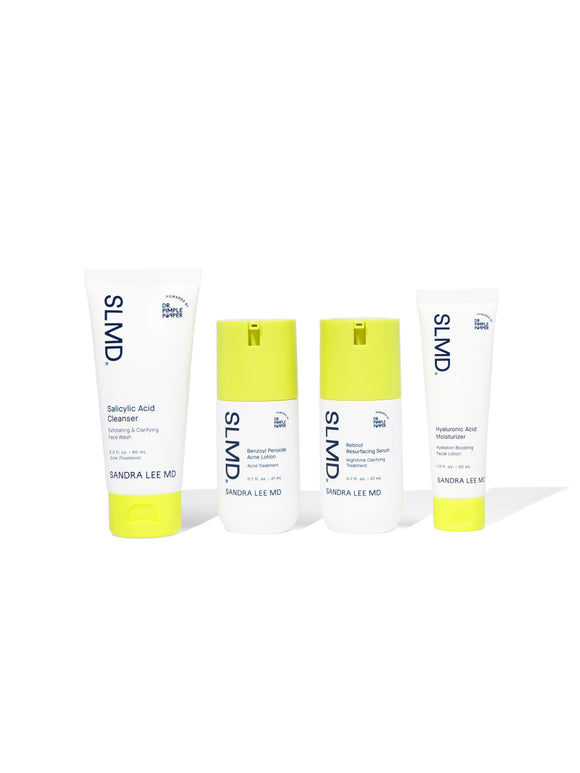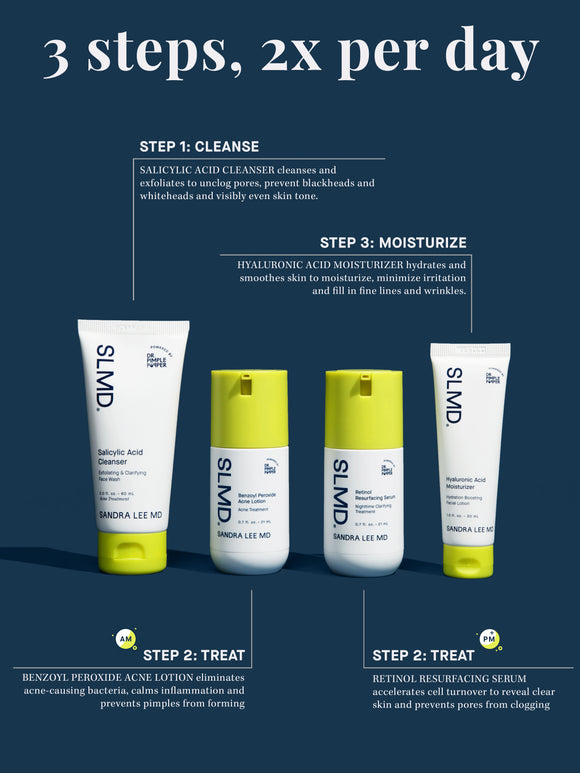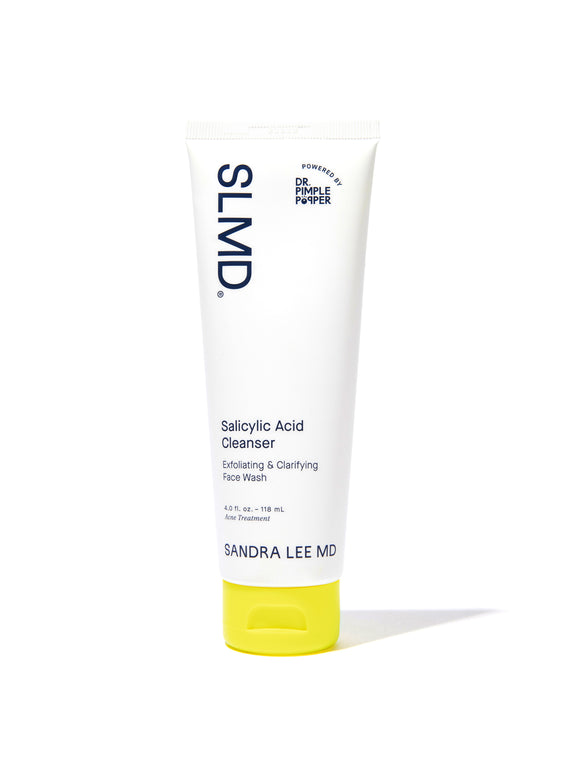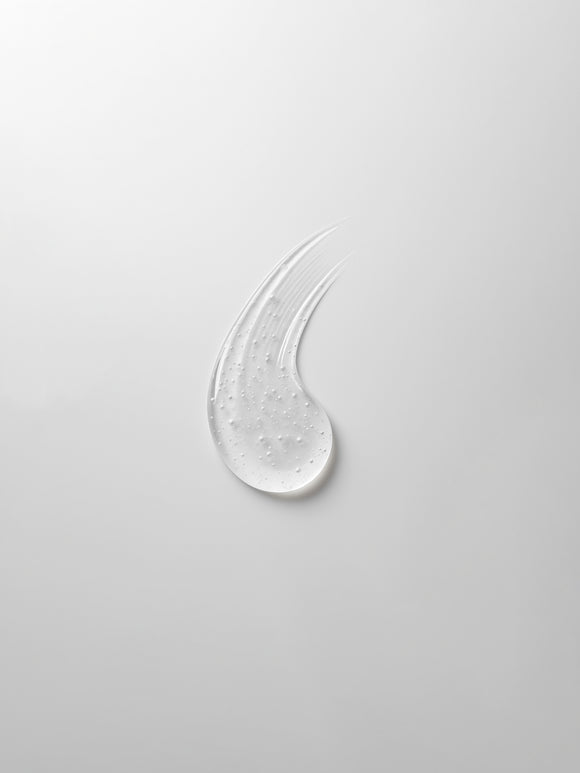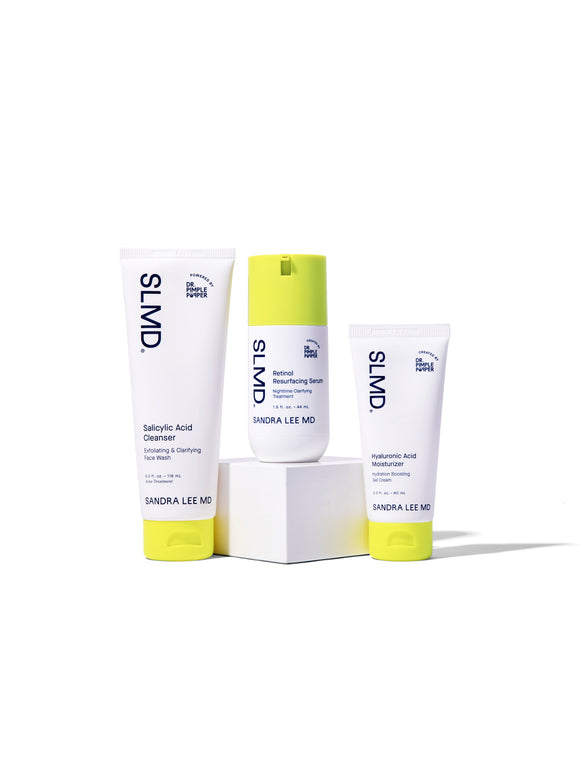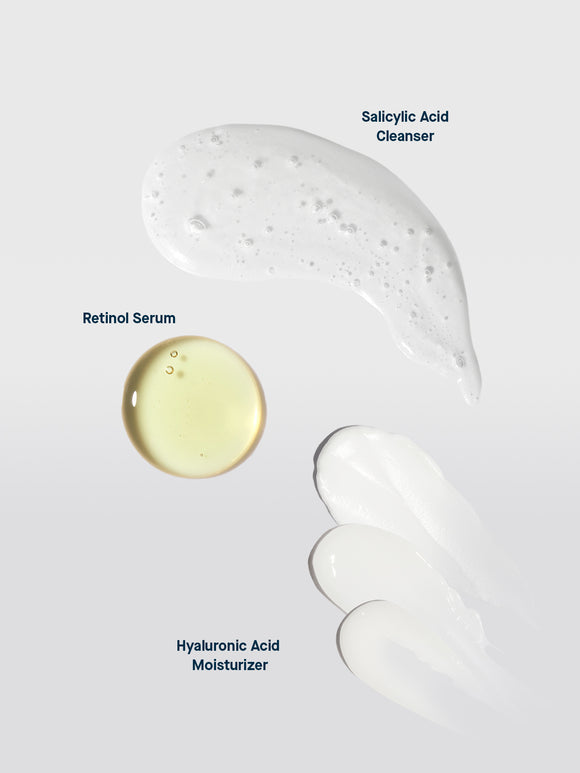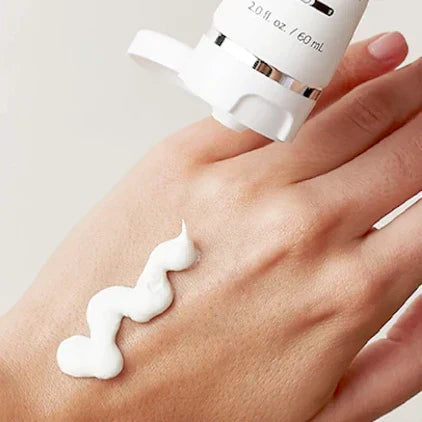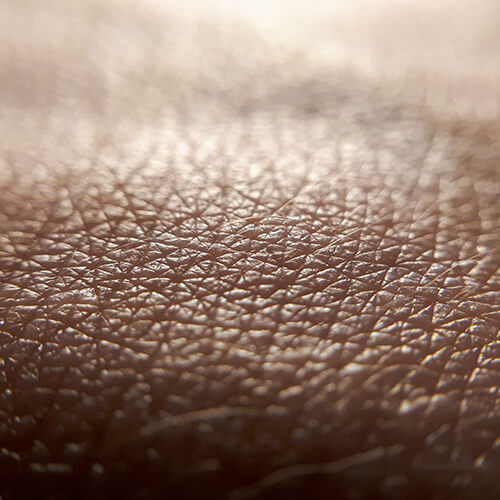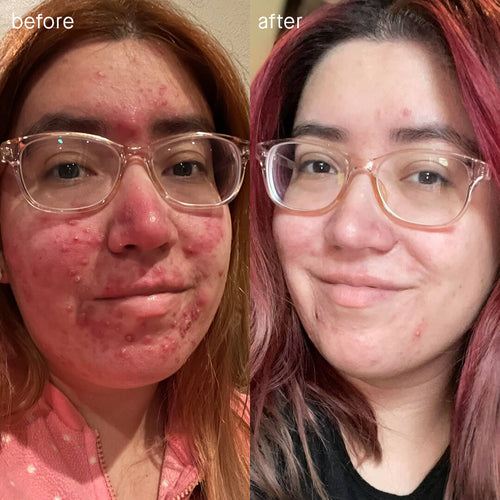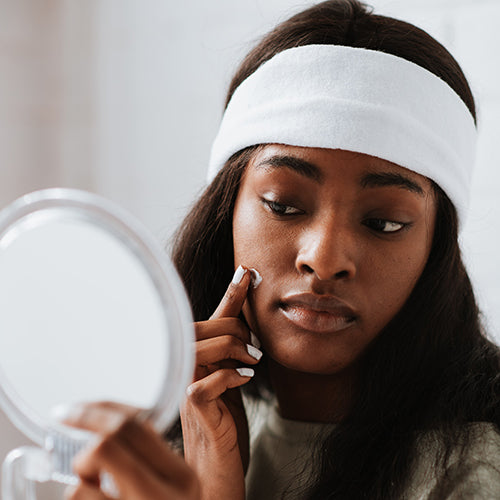
Can You Combine Salicylic Acid & Retinol in Your Skincare Routine?
Dr. Pimple Popper explains how to take advantage of these two potent active ingredients.
Published:
2 minute read
Combining skincare ingredients can be daunting — especially powerful, acne-fighting actives like salicylic acid and retinol. Here’s the good news: you can use a BHA like salicylic acid and retinoids together in the same skincare routine — as long as you know what you’re doing. In this guide, we break down the basics of these popular ingredients and how the two can work together for maximum results.
Article Quick Links
What does salicylic acid do for skin?
The most commonly used BHA, salicylic acid was originally derived from the bark of the willow tree. It’s an oil soluble exfoliant, which means that it can penetrate into the sebum on your skin and break up dead skin cells and oils trapped in pores.
Salicylic acid’s primary benefits:
- Exfoliant: sloughs away dead cells
- Pore purifier: breaks down oil trapped in pores
- Anti-inflammatory: calms redness
- Anti-bacterial: kills microbes
- Keratolytic: breaks down keratin
What does retinol do for skin?
Derived from vitamin A, retinol is a potent, water-soluble antioxidant that speeds up the cell turnover process, encouraging fresh, new cells to replace older, dead cells. Less buildup of dead cells means less chance of those cells clogging up your pores.
Retinol helps with several skin concerns, including:
- Acne
- Fine lines and wrinkles
- Collagen production
- Sun damage
- Hyperpigmentation
Dr. Pimple Popper's SA + Retinol Picks
How to safely combine salicylic acid and retinol
Combining potent acne-fighting ingredients requires caution — but using salicylic acid and retinol together is perfectly safe and can be highly effective. Exfoliating with salicylic acid can help retinol reach deeper layers of the skin, enhancing its effectiveness. Here’s a step-by-step skincare routine:
Morning routine
- Cleanse your face with a gentle, BHA-containing cleanser, like SLMD Salicylic Acid Cleanser (Dr. Lee's favorite). This is formulated for all skin types and is gentle enough for daily use.
- Follow with a lightweight moisturizer (try SLMD Hyaluronic Acid Moisturizer) and a broad-spectrum sunscreen with at least SPF 15.
Night routine
- Cleanse your face to remove impurities.
- Apply a retinol product with a time-release formula that includes skin-soothing ingredients, such as SLMD Retinol Serum, with hyaluronic acid.
Dr. Pimple Popper’s tips for minimizing irritation
You can expect some initial redness and flaking during the first few weeks of using retinol, says Dr. Lee, particularly when combining it with an exfoliant like salicylic acid. Here’s how to cope:
- Start slowly: To avoid shocking your skin, gradually increase your frequency of application as tolerated, while heeding the instructions on your products’ packaging.
- Alternate days: If you experience minor irritation, or if you have sensitive skin, consider using salicylic acid and retinol on alternate days.
- Sun protection: Since you’re sloughing away a protective layer of older skin cells, you might become more sensitive to the sun. Apply a minimum SPF 15 daily to avoid UV damage.
- Monitor your skin: Always keep an eye on how your skin reacts and adjust your routine accordingly.

Dr. Lee's Last Word
One of the most common questions I get from patients is, “How do I combine different skincare ingredients?” It can be confusing, especially when dealing with potent acne and anti-aging ingredients. Two of my favorites — salicylic acid and retinol — CAN be used together, as long as you pay attention to your skin. Start slowly and be sure to wear sunscreen daily.



